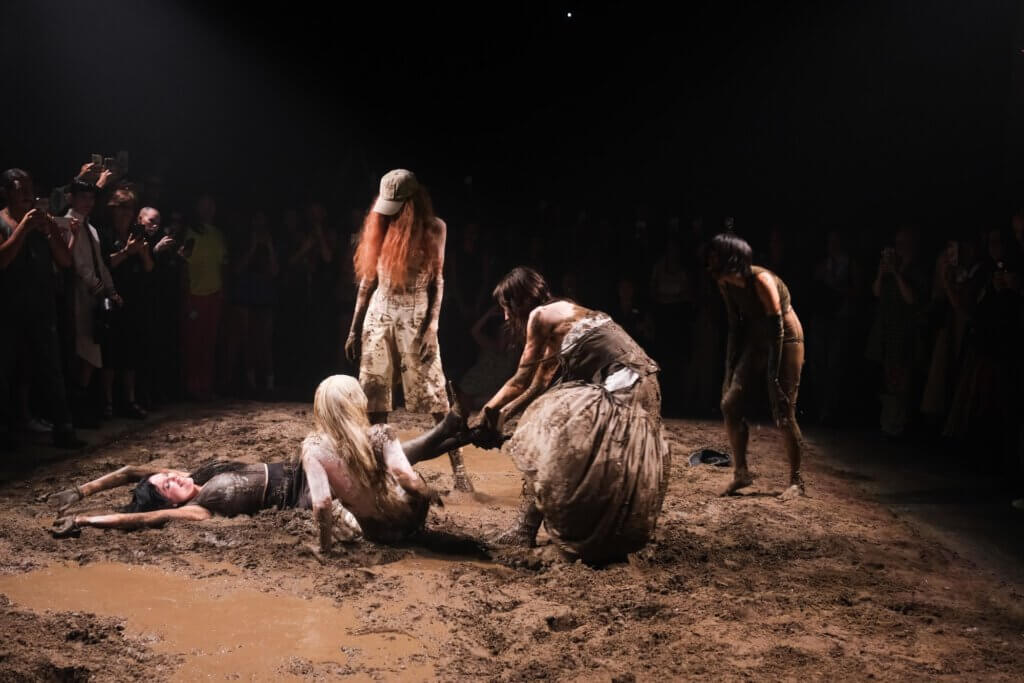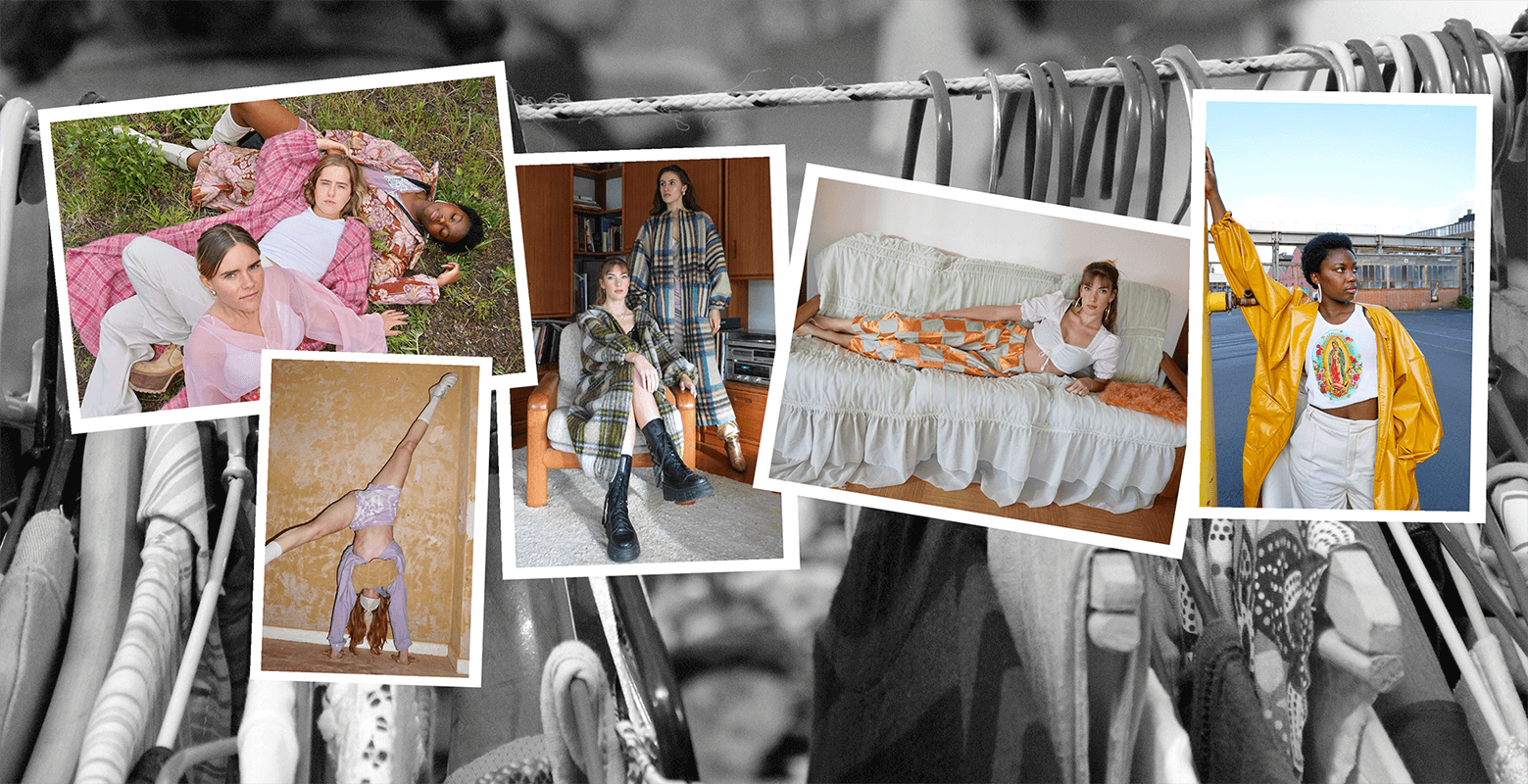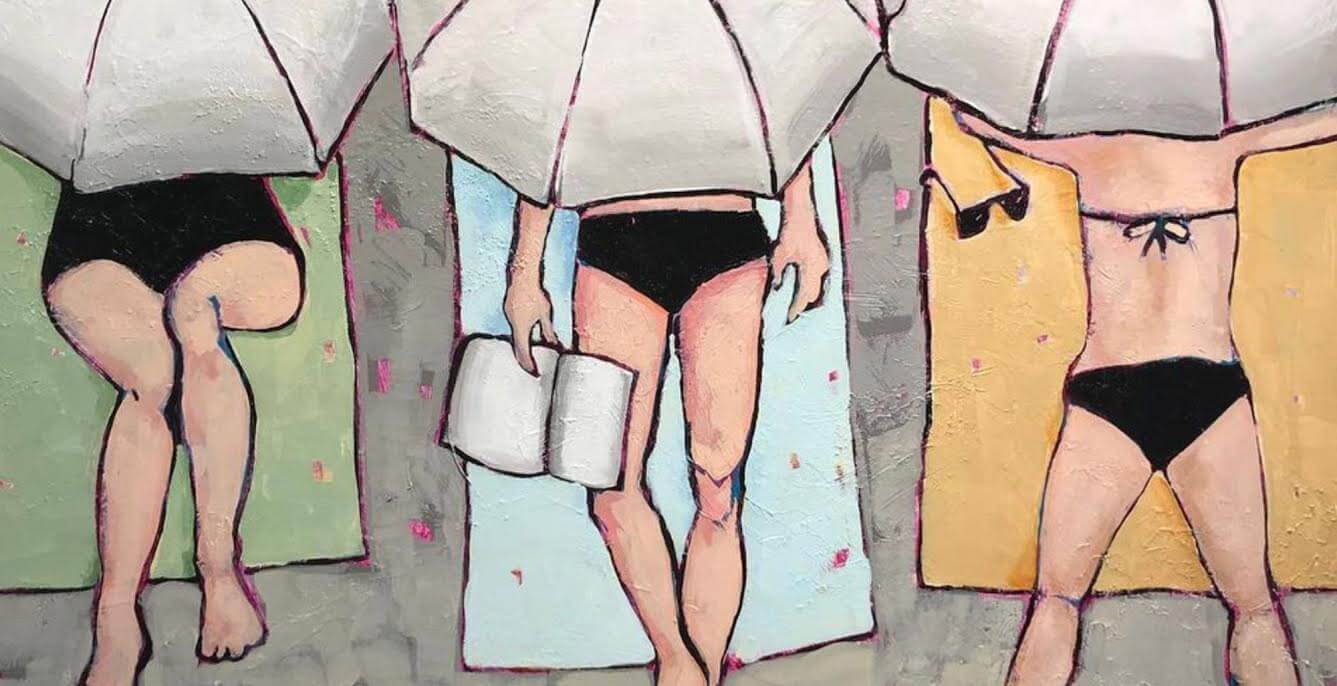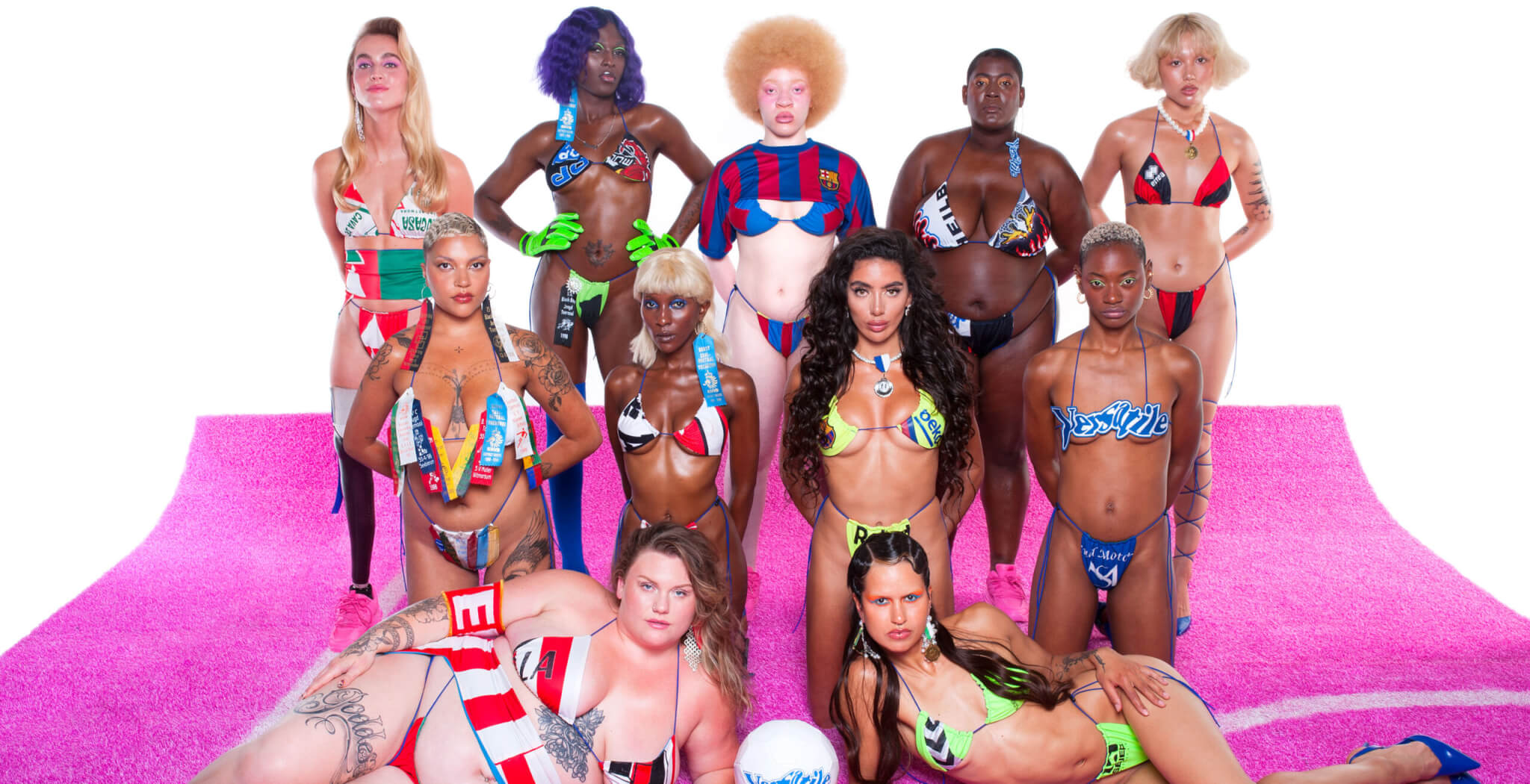Whenever we thought that fashion shows were about putting on the perfect stage we certainly thought that theatrical was part of it. Alexander McQueen, Karl Lagerfeld and John Galliano have put on the most eccentric stagings that are simply unforgettable. But things are taking a new turn in the age of social media and the question about what matters more, entertainment or the qualities that belong in fashion design, is at the top of our head. Or more justly, how entertainment and storytelling can outweigh the quality of a collection.
This question was addressed by AVAVAV last week, with an amusing show that like her previous one has been synonymous with ‘viral’, making it into everyone’s social media feed. Beate Karlsson, the Swedish, New York-based designer behind AVAVAV, closed Milan Fashion Week with a stress-inducing runway show that mimicked fashion’s fast-paced design processes. For starters, backstage staff pasted AVAVAV-scribbled pages on the wall before pushing a model onto the runway, and with this, the ground for chaos, unfinished pieces, undressed models and discrepant concepts was set.
Models ventured walking quickly while others stayed calm even though their teared mascara was a sign of their emotional outburst. In this show, no one was at peace. Hoodies reading “no time to design” epitomised AVAVAV’s SS24 collection’s concept: that the fast-paced industry doesn’t allow for design processes to germinate, and one thing comes after the other without maturation. And that was complemented by the “Filthy rich” tattoos stamped on the models, pointing at the industry’s hunger to sell half-cooked concepts for the price of novelty.
But going back to the idea of entertainment, if it’s true that fashion shows are increasingly disputing for the prize to the most viral runway show, then this year’s award goes to AVAVAV, whose debuting runway show in March was comical and unexpected, filling attendees with expectation and anticipation about this season. Titled “Fake it til you break it,” AVAVAV’s AW23 show staged a visual translation of its name: things falling apart — from garments to set design and everything else that should stay in place. With this staging, Karlsson questioned the driving force behind being so serious about luxury and perfection, as if these two were inseparable or unquestionable. In that way, Karlsson commented on the “superficiality of fashion.”

Looking back at AVAVAV’s latest show and its energy of chaos and undone makes me wonder whether the show was a synonym too for today’s course of life, a string of endless tasks and unrealistic aspirations traversed with optimisation, energy shortage and a hefty amount of unchecked emotions. In a similar way, this reminds me of Elena Velez’s SS24 show held during New York Fashion Week, whose mud pit and models wading through layers of sludge represented the dichotomies and intricacies of womanhood. In this show, the antagonist role came to the surface and it offered a dark, theatrical commentary on contemporary femininity, extrapolated with undergarments reading “fed.”
The messy, stressful setting delivering dystopian energy was not the only thing these two shows had in common. AVAVAV’s dresses made of tape or stick notes, and Velez’s cotton garments with frayed edges are proof that macabre glamour and humour matter more than the garments themselves when it comes to spectacles, mainly because they feed our meme culture as they find shelter somewhere in a corner of the dark web.
*Header image: Umberto Fratini via GoRunway.com




























